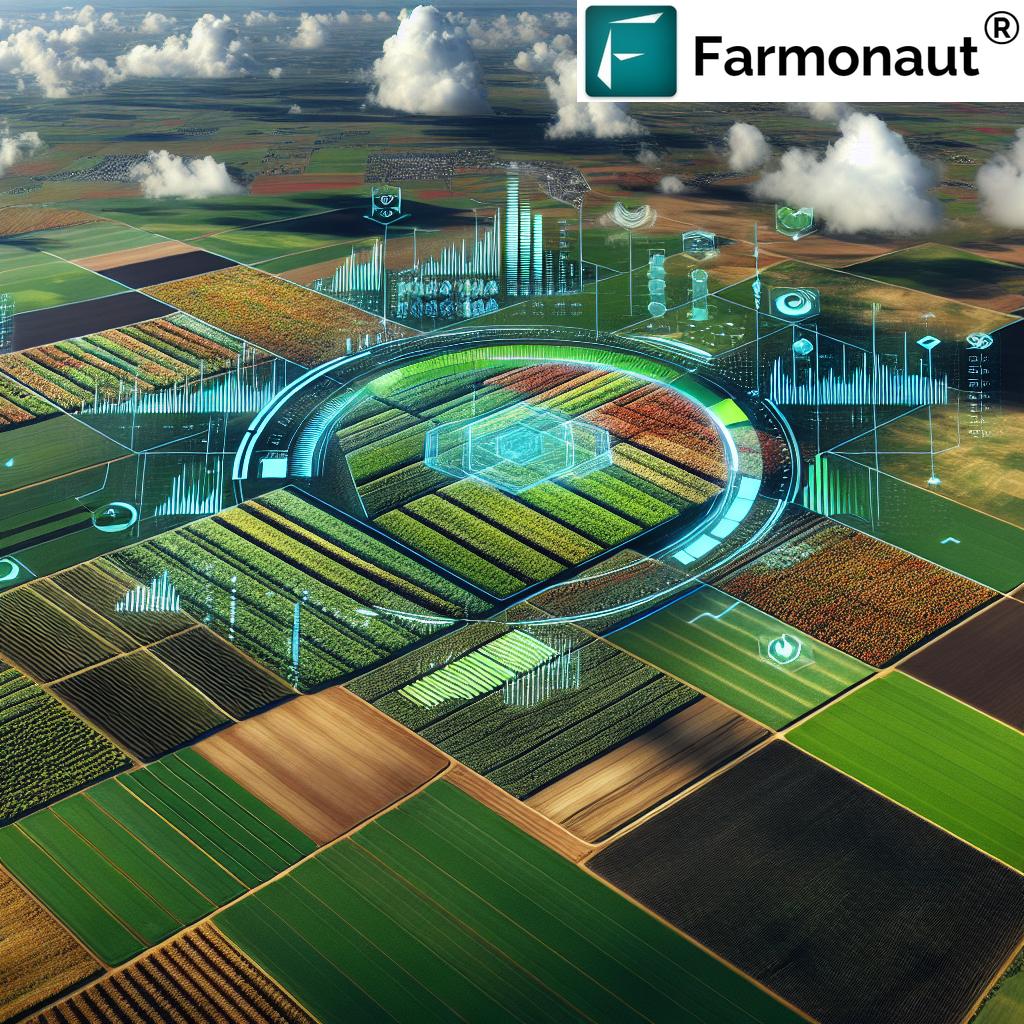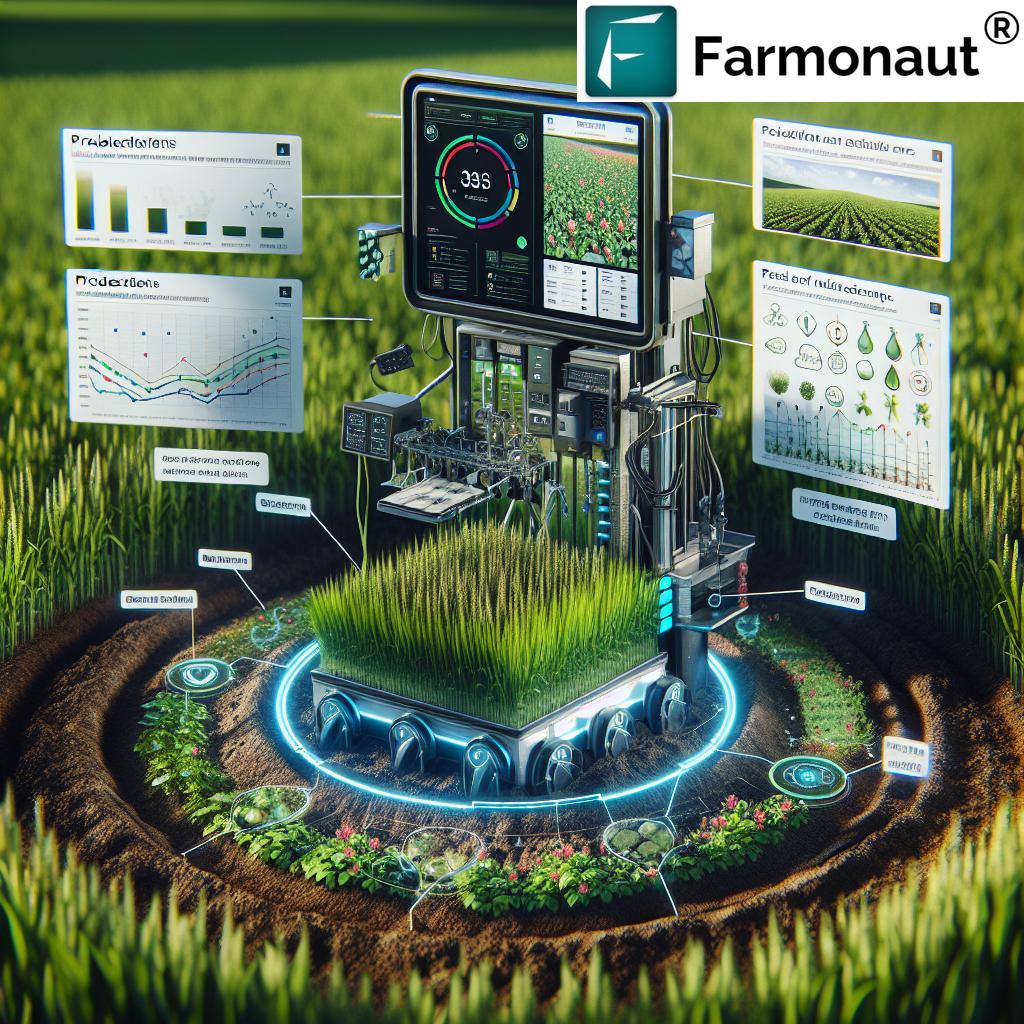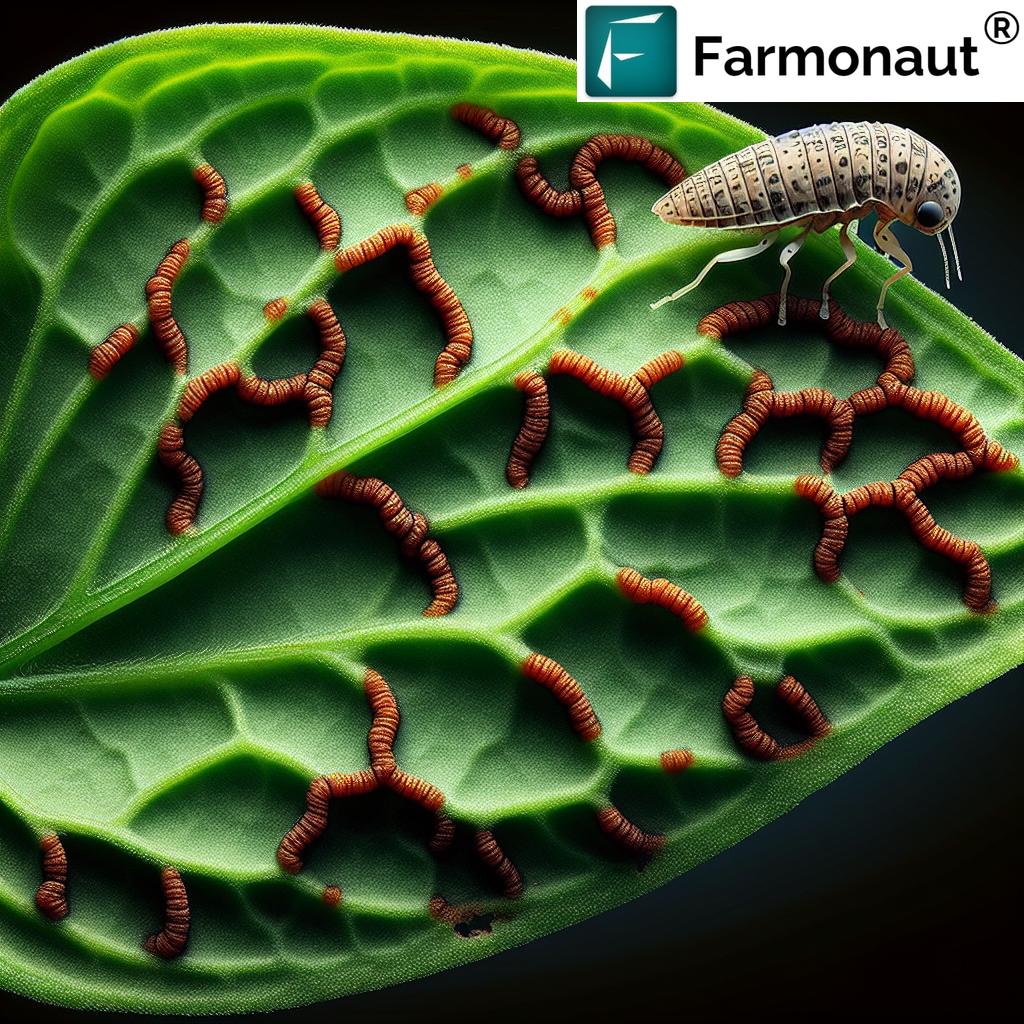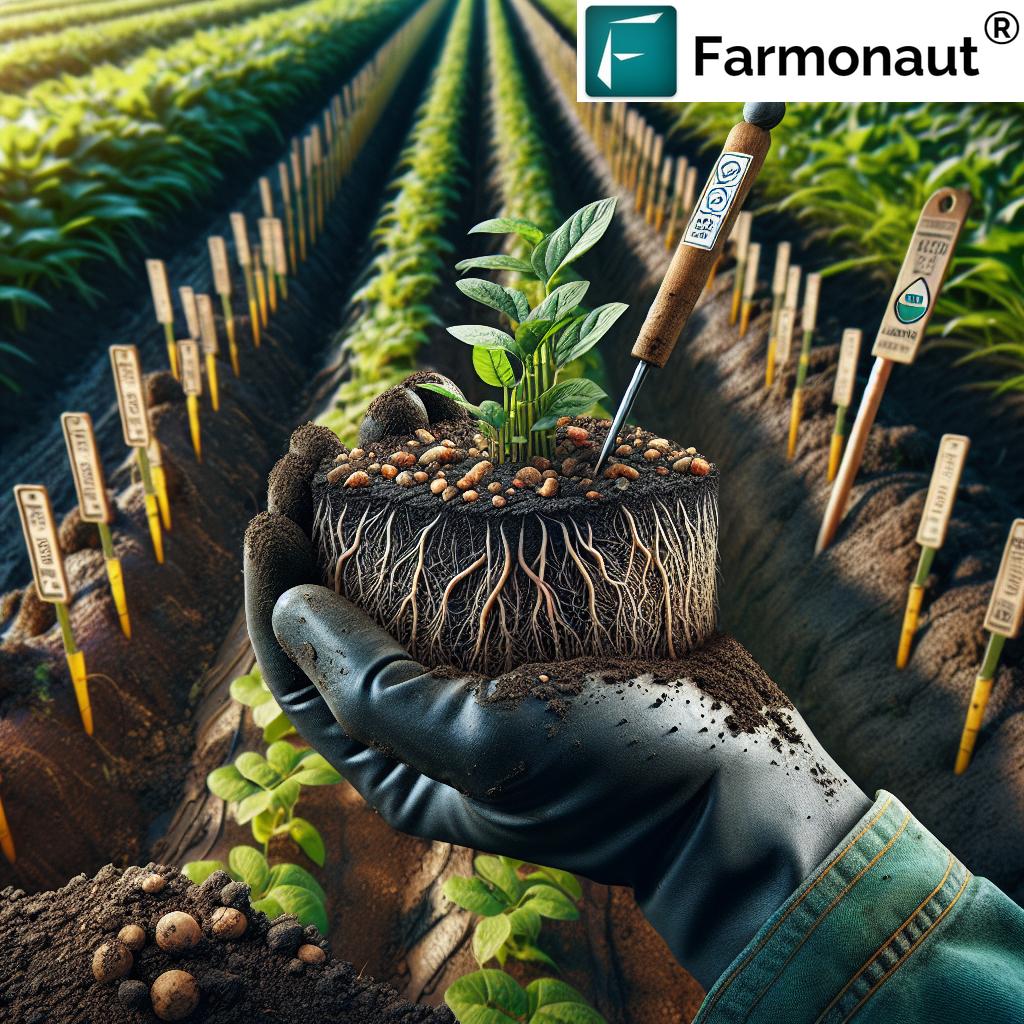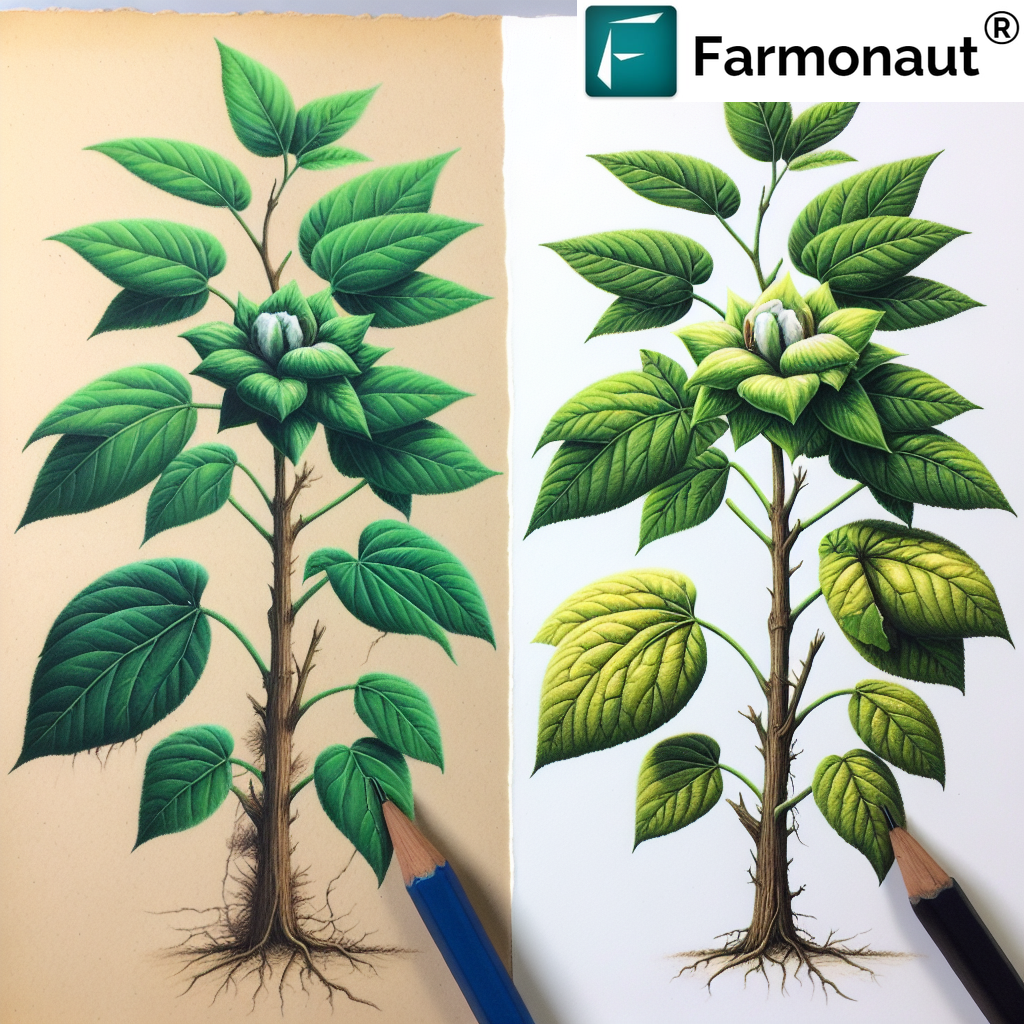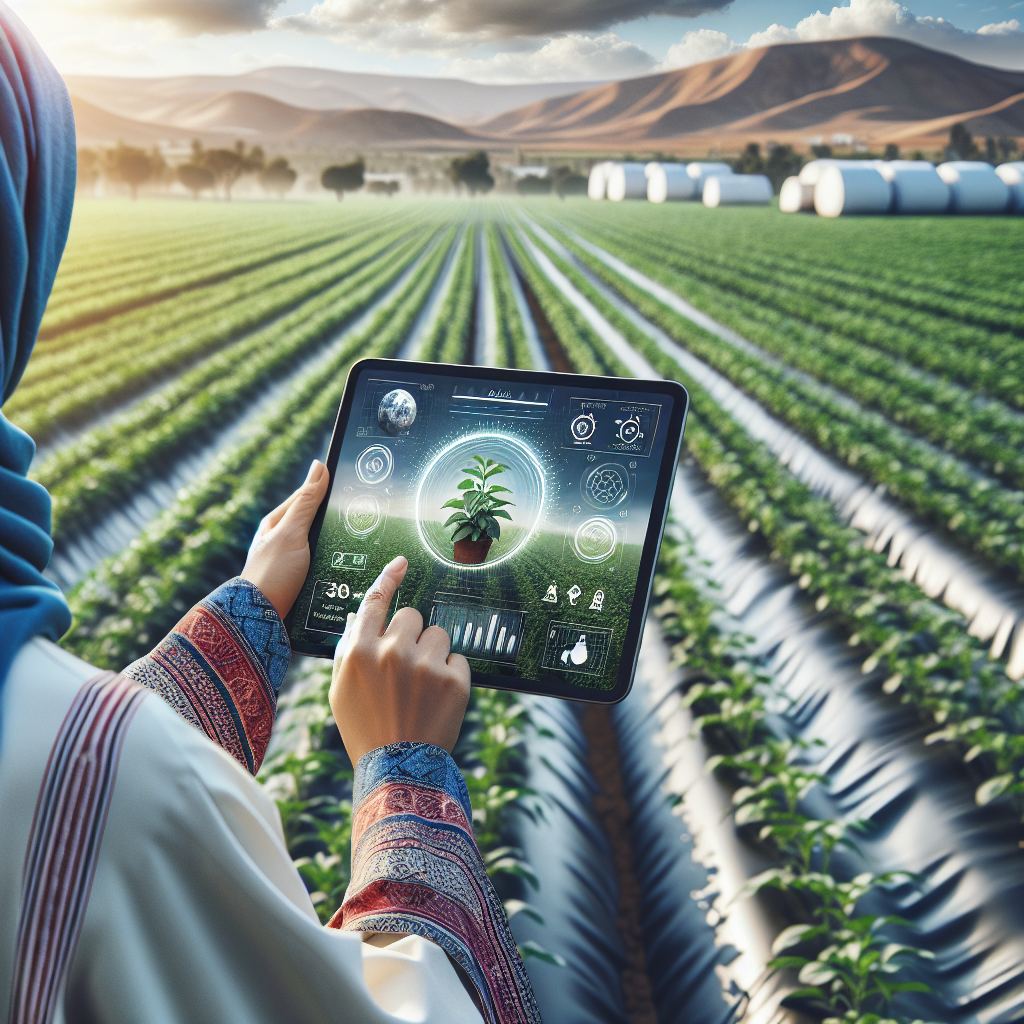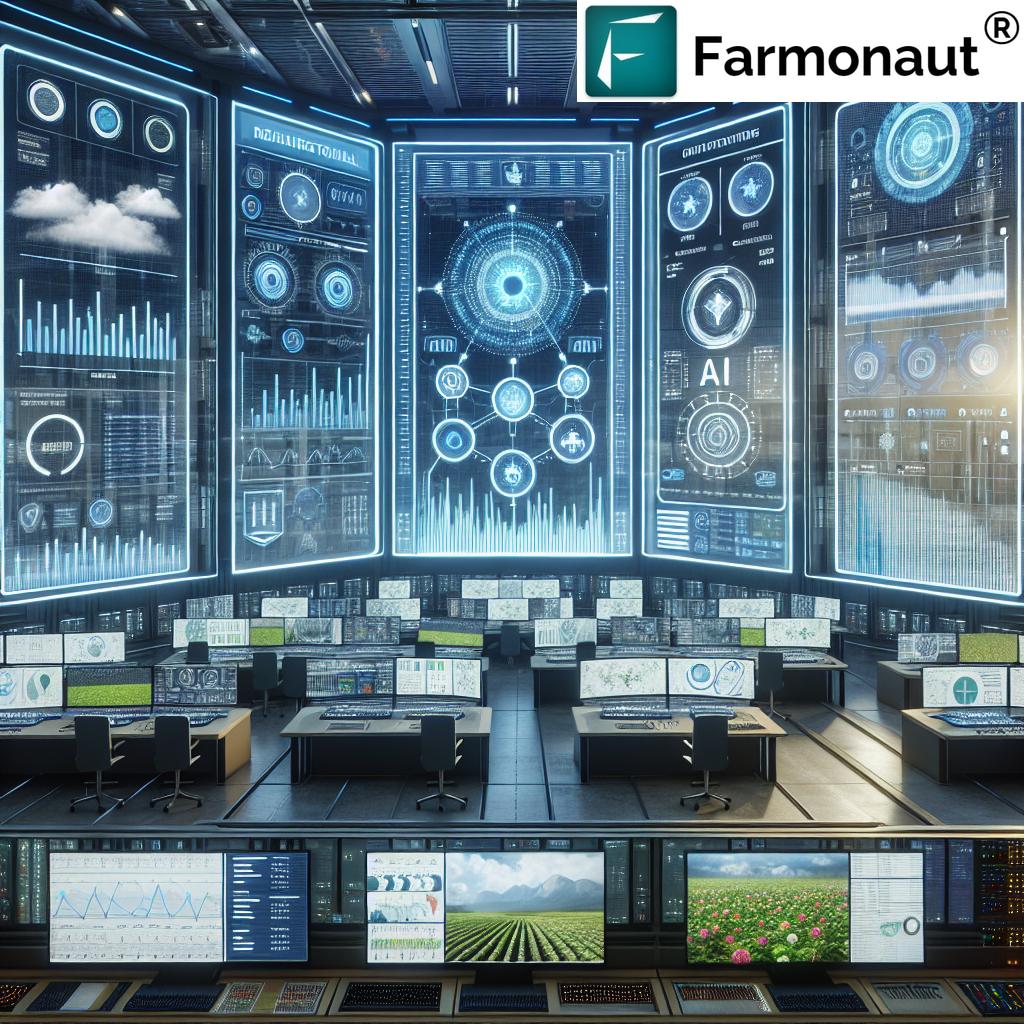Crop Monitoring Services: 7 Smart Farming Innovations
Crop Monitoring Services: Revolutionizing Agriculture for Sustainable Growth
Table of Contents
- The Significance of Crop Monitoring
- 7 Smart Farming Innovations in Crop Monitoring
- Feature-Benefit Comparison Table
- Applications of Crop Monitoring Solutions
- Benefits for Yield, Efficiency, and Sustainability
- Farmonaut: Making Precision Agriculture Accessible
- Key Challenges & The Future of Crop Monitoring
- FAQ: Crop Monitoring & Smart Farming Technologies
In the dynamic landscape of modern agriculture, crop monitoring services play a fundamental role in boosting productivity, sustainability, and the efficient management of agricultural resources. The integration of precision agriculture technologies—including satellite imagery, AI, advanced sensors, and automation—is reshaping traditional farming practices globally.
Through real-time observation, analysis, and data-driven decisions, these innovative tools empower farmers to achieve significant yield optimization, improved resource management, and enhanced environmental sustainability. This comprehensive guide explores the importance of crop monitoring, highlights the latest innovations, and delves into practical applications and benefits for both large and small-scale farms worldwide.
The Significance of Crop Monitoring
Crop monitoring encompasses the continuous observation of crops using advanced technologies to assess plant health, growth stages, and environmental conditions. By leveraging actionable data, farmers can fine-tune resource inputs such as water, nutrient levels, and pesticides—ultimately ensuring higher productivity, reduced waste, and sustainable farming.
- Yield Optimization: Timely interventions driven by accurate analysis enhance yield potential and crop quality.
- Resource Management: Smart resource management through sensor data and AI reduces costs and conserves inputs.
- Environmental Sustainability: Precision agriculture practices reduce chemical waste, manage water use, and protect soil health.
- Food Security: Monitoring supports consistent supply and helps meet growing market demands.
With climate variability, resource constraints, and the ever-evolving market landscape, real-time crop health monitoring and efficient resource use are more vital than ever.
7 Smart Farming Innovations in Crop Monitoring
Discover the core technologies powering today’s most effective crop monitoring services—each designed to help farmers analyze fields, streamline management, and boost yield and sustainability.
1. Satellite Imagery for Farming
Satellite-based crop monitoring stands at the forefront of precision agriculture technologies. High-resolution imagery from satellites captures vast details on vegetation health (NDVI), soil moisture levels, crop growth stages, and areas of plant stress.
- Enables entire-farm assessment across thousands of hectares
- Identifies patterns of pest outbreaks, disease hotspots, and nutrient deficiencies
- Supports planning harvest, irrigation, and input application schedules
Examples: Farmonaut’s satellite-based services provide farmers with actionable insights for large-scale farm management, enabling data-driven field mapping, productivity assessment, and risk mitigation.
2. Drones and UAV Crop Monitoring
Unmanned Aerial Vehicles (UAVs), equipped with multispectral cameras and thermal sensors, offer rapid, detailed data collection over targeted areas. Drones can quickly capture high-resolution imagery—pinpointing pest or disease detection, growth patterns, and damage assessment post severe weather events.
- Monitor crop health and stress in localized zones
- Guide optimal irrigation and targeted pesticide application
- Assist in accurate mapping for planning and logistics
Drones offer an ideal complement to satellites, especially for smaller plots or specific event-driven analysis.
3. IoT Soil Moisture Sensors and Environmental Sensing
The Internet of Things (IoT) delivers next-generation soil monitoring for smarter decisions.
- Soil moisture sensors measure water levels, guiding irrigation schedules and preventing both over- and under-watering.
- Climate and weather sensors continuously record temperature, humidity, rainfall, and sunlight—helping farmers respond to real-time conditions.
- In-field nutrient sensors analyze levels of NPK (Nitrogen, Phosphorus, Potassium) to determine fertilizer needs.
This granular, hyperlocal data leads to remarkable gains in resource efficiency and cost-saving.
4. AI in Agriculture & Machine Learning Analytics
Artificial Intelligence (AI) and machine learning models analyze vast volumes of agriculture data to deliver predictive analytics. Key applications:
- Yield prediction tools combine satellite, sensor, and historical crop data to offer robust forecasts.
- Advanced pest and disease detection systems automate identification of anomalies that might be missed by visual inspection.
- AI-driven advisory systems, like Jeevn AI from Farmonaut, deliver personalized crop management strategies and weather forecasts to farmers‘ smartphones.
These innovations rapidly analyze multiple input layers, predict risks, and suggest optimal interventions.
5. Real-time Mobile Crop Monitoring Apps
Mobile technology brings the monitoring revolution to every farmer’s pocket.
- Apps allow field-by-field crop health tracking, enable data upload, and send alerts to farmers as soon as risks are detected.
- Integrated weather forecasts and market information help users plan harvests and sales for optimal value.
- Resource planning, fleet management, and even traceability are now managed directly from mobile apps, as offered via Farmonaut.
These apps unite data layers from various technologies in a seamless interface, making crop monitoring both accessible and actionable.
6. Blockchain & Product Traceability Systems
Global market and regulatory demands call for supply chain transparency.
- Blockchain-based traceability records every step from field to consumer, supporting food safety and authenticity.
- Farmer-friendly tools certify commodity origins for regulations and ethical sourcing.
- Reduces fraud, boosts trust, and supports premium market positioning.
Farmonaut’s traceability solution enables crop-level authenticity certification, building consumer confidence in food provenance.
7. Carbon Footprinting & Sustainability Monitoring
Environmental footprint tracking is now critical in sustainable agriculture.
- Tools like Farmonaut’s carbon footprinting feature allow agribusinesses to monitor, analyze, and minimize greenhouse gas emissions.
- Helps farmers and organizations comply with new environmental regulations and sustainability benchmarks.
- Data-driven audits identify opportunities for efficiency, reducing waste and costs while enhancing land stewardship.
These solutions play an essential role in scaling sustainable agriculture practices globally.
Feature-Benefit Comparison Table: Crop Monitoring Technology
| Innovation Name | Core Technology | Key Features | Estimated Yield Improvement (%) | Resource Efficiency Gain (%) | Sustainability Impact |
|---|---|---|---|---|---|
| Satellite Imagery for Farming | Satellite Imagery, NDVI analysis | Wide-area monitoring, crop health mapping, soil moisture analysis | 10–30% | 20–35% | High—supports large-scale resource management, reduces overuse |
| Drones & UAV Crop Monitoring | Multispectral UAVs, Sensors | Localized, high-resolution imagery, plant health & damage assessment | 8–20% | 10–25% | Moderate—enables targeted interventions, reduces input waste |
| IoT Soil Moisture & Environmental Sensors | IoT Sensors | Real-time soil moisture, weather, and nutrient monitoring | 12–28% | 25–40% | High—direct input optimization, water conservation |
| AI in Agriculture & Machine Learning Analytics | AI, Machine Learning | Yield prediction, pest/disease forecasting, decision support | 12–35% | 18–30% | High—enables sustainable practices, early issue detection |
| Real-time Mobile Crop Monitoring Apps | Mobile, Cloud, APIs | Instant field alerts, remote monitoring, weather integration | 7–22% | 12–23% | Moderate—empowers digital decision-making |
| Blockchain & Product Traceability | Blockchain | Crop-level tracking, supply chain transparency, fraud reduction | 5–15% | 8–16% | High—strengthens market trust, compliance |
| Carbon Footprinting & Sustainability Monitoring | GHG Analytics, Data Platforms | Emission tracking, compliance, sustainability benchmarking | 5–12% | 10–20% | Very High—direct impact on emissions and compliance |
Applications of Crop Monitoring Solutions
Pest and Disease Detection Systems
Precise pest and disease detection systems are crucial in preventing devastating crop losses worldwide. With satellite imagery and AI, farmers can now identify problem areas before infestations spread—resulting in highly targeted, reduced pesticide application and greater protection for crops and soil health.
Irrigation Planning & Water Management
Soil moisture sensors and weather-linked irrigation planning are driving a new era of water conservation in agriculture.
- Automated irrigation schedules adapt in real-time to both field and atmospheric conditions.
- Water waste is minimized, yield is preserved even in drought-prone or rain-dependent regions.
- Farmonaut’s satellite-based monitoring further enables precise water management across multiple fields.
Smart Nutrient Management
Over- and under-application of fertilizers is a major challenge in traditional farming.
- Soil data analysis ensures fertilizers are applied only where necessary—optimizing nutrient levels and reducing runoff.
- Through Farmonaut’s integrated tools, farmers can track nutrient cycles for each planting season.
Optimal Harvest Timing & Yield Prediction Tools
The combination of AI models, yield prediction tools, and real-time weather data helps farmers determine the optimal harvest period—to maximize crop quality and meet dynamic market demand.
- Reduces losses from late/early harvesting
- Enables resource and labor planning
Climate Adaptation & Risk Management
With shifting climate patterns and increased frequency of abnormal weather events, actionable data is essential for rapid adaptation. Crop monitoring services—like those offered by Farmonaut—assess climate-related risks, support mitigation planning, and help farmers maintain sustainable operations against future uncertainties.
Benefits for Yield, Efficiency, and Sustainability
The integration of crop monitoring services brings wide-ranging advantages across the agriculture value chain:
- Increased Efficiency: Automation and data-driven decisions streamline farming operations, freeing up labor for higher-value tasks.
- Cost Savings: Precise use of inputs reduces fertilizer, pesticide, and water costs, while minimizing resource waste.
- Enhanced Crop Quality: Discovery of growth anomalies and stress enables interventions that boost crop market value (size, color, uniformity).
- Regulatory Compliance: Automated reports and guided interventions help farmers meet environmental regulations, product traceability, and carbon footprint standards.
- Market Advantage: Blockchain-based traceability increases consumer trust and opens premium export markets.
- Reduced Environmental Impact: Targeted application of inputs cuts chemical runoff, protecting biodiversity and soil health.
- Improved Food Security: Consistent monitoring and yield prediction smooth out supply uncertainties and reduce losses.
Developers and organizations can leverage crop monitoring data and weather intelligence via Farmonaut’s API. See full integration documentation at Farmonaut Satellite & Weather API Developer Docs.
Farmonaut: Making Precision Agriculture Accessible Globally
We at Farmonaut are dedicated to democratizing access to leading crop monitoring services worldwide. Our platform seamlessly combines satellite imagery, AI-based advisory systems, and advanced management tools—making affordable, real-time, data-driven insights accessible to every farmer, agribusiness, and government agency.
With web, Android, iOS app, and API access, users can:
- Monitor crop health, soil moisture, and vegetation levels from planting to harvest, anytime, anywhere
- Receive AI-generated advice for resource management and disease/pest intervention
- Enable blockchain-assisted product traceability and carbon footprint analytics for sustainability and market differentiation
- Streamline fleet and large-scale management for corporate clients
- Support crop loan and insurance verification to facilitate fair, data-backed financing
Our scalable subscription model ensures that individual farmers and the largest agribusinesses alike can benefit from advanced precision agriculture technologies—all without expensive hardware investments.
Explore our Crop Plantation & Forest Advisory Platform to get started with crop monitoring, sustainability tracking, and remote resource management.
Key Challenges and the Future of Crop Monitoring
Current Challenges
- High Initial Costs: Investing in advanced satellite imagery, AI advisory systems, and sensors can be expensive for smaller farmers.
- Digital Literacy Gap: Adoption of digital agriculture platforms requires training in app usage and basic data analysis.
- Connectivity Issues: Many rural areas lack fast, reliable internet—slowing real-time data transmission and monitoring.
- Integration with Traditional Practices: Introducing innovative tools requires both education and clear demonstration of cost-benefit gains.
Looking Forward: Future Innovations
- AI-driven Predictive Analytics: Machine learning will offer deeper insights into weather-risk modeling, resource planning, and almost instant diagnostics.
- Biodegradable Sensor Development: New biodegradable sensors promise to monitor soil health and decompose naturally—eliminating electronic waste from farms.
- Expanded Space-Based Insights: Advances in satellite constellations will provide global, near real-time monitoring—benefiting not just individual farms but entire regions and governments.
FAQ: Crop Monitoring & Smart Farming Technologies
-
What is crop monitoring?
Crop monitoring refers to the continuous observation and analysis of crops, fields, and environmental conditions, using advanced technologies like satellite imagery, IoT sensors, and AI, to optimize farm performance and sustainability. -
How do satellite imagery services benefit farmers?
Satellite imagery provides a large-scale, timely view of crop health, soil moisture, and growth patterns, enabling optimized input usage, early detection of problems, and improved yield prediction. -
What are real-time crop health monitoring systems?
These systems combine remote sensing, field sensors, and AI analytics to continually assess the condition of crops, alert farmers to stress/disease, and guide timely interventions. -
How does AI in agriculture improve efficiency?
AI processes massive amounts of data from satellites, sensors, and weather stations to identify patterns, make yield predictions, and deliver actionable recommendations—saving time, reducing costs, and enhancing farm output. -
What are soil moisture sensors used for?
These sensors track the water content in soil in real time, ensuring precise irrigation—reducing waste, preventing crop stress, and supporting healthy plant growth. -
How can crop monitoring services help reduce environmental impact?
By enabling precise application of fertilizers and pesticides, optimizing water usage, and tracking carbon footprints, crop monitoring systems directly reduce chemical runoff, water waste, and greenhouse emissions. -
How do traceability platforms support sustainable agriculture practices?
Blockchain-based traceability platforms record every transaction and movement in the supply chain, ensuring food safety, authenticity, and compliance with environmental regulations. -
Are there affordable options for small farmers?
Yes. Farmonaut’s subscription-based platform and mobile apps make precision agriculture, satellite monitoring, and real-time advisory accessible and affordable for farmers of all sizes, eliminating the need for expensive hardware.
Conclusion: Advancing Towards Sustainable, Data-Driven Agriculture
The agriculture sector is undergoing a profound transformation—led by crop monitoring services and smart farming innovations. Embracing data-driven technologies such as satellite imagery, IoT sensors, and AI-driven analytics not only ensures higher yields and quality but also promotes sustainable agriculture practices with minimized environmental impact.
By integrating these cutting-edge tools, farmers globally can achieve greater efficiency, lower costs, and meet evolving market and regulatory demands.
We at Farmonaut are proud to support this revolution by making precision agriculture accessible to everyone through satellite-based crop monitoring, mobile solutions, and a commitment to sustainability.




